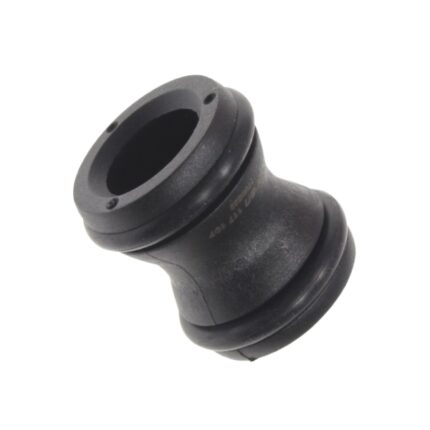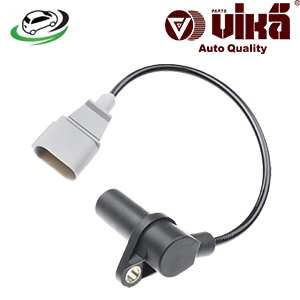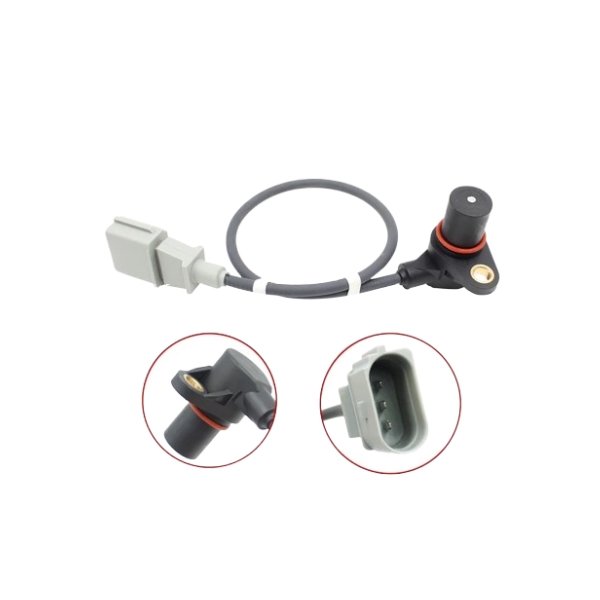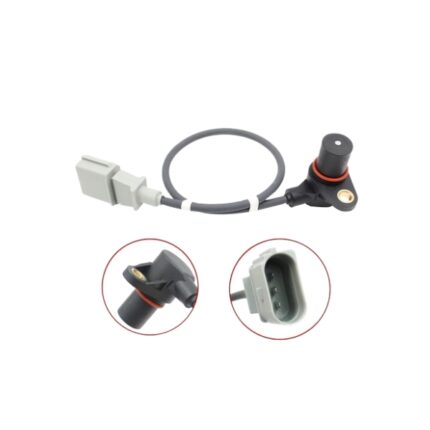Get Volkswagen Passat 2007-2010 Crankshaft Pulse Sensor 06A906433K in Kenya
The crankshaft pulse sensor, often referred to as the crankshaft position sensor (CKP sensor), is a vital component in modern internal combustion engines. It plays a crucial role in ensuring that the engine runs efficiently and effectively by providing precise information about the position and rotational speed of the crankshaft. This guide explores the crankshaft pulse sensor in detail, covering its functions, types, working principles, significance, and troubleshooting.
What is a Crankshaft Pulse Sensor?
The crankshaft pulse sensor is an electronic device that monitors the position and rotational speed of the crankshaft in an engine. The crankshaft is the component that converts the up-and-down motion of the pistons into rotational motion, which ultimately drives the vehicle’s wheels. The sensor provides real-time data to the engine control unit (ECU), which uses this information to control fuel injection timing, ignition timing, and other critical engine parameters.
Without an accurate crankshaft pulse sensor, the ECU would be unable to precisely control these functions, leading to poor engine performance, increased emissions, and potential engine damage.
Types of Crankshaft Pulse Sensors
There are primarily three types of crankshaft pulse sensors, each with its own working principle and application:
- Magnetic Inductive Sensor:
- Principle: This sensor operates on the principle of electromagnetic induction. It consists of a coil of wire wrapped around a magnet. As a toothed wheel or reluctor passes by the sensor, the changing magnetic field induces a voltage in the coil, which is then sent as a signal to the ECU.
- Application: Magnetic inductive sensors are commonly used in older vehicles and are known for their durability and reliability.
- Hall Effect Sensor:
- Principle: The Hall effect sensor uses a semiconductor to detect changes in a magnetic field. As the crankshaft rotates, a magnet attached to it passes by the sensor, causing a change in the magnetic field. This change generates a voltage in the sensor, which is sent to the ECU as a signal.
- Application: Hall effect sensors are widely used in modern vehicles due to their accuracy and ability to work at low speeds.
- Optical Sensor:
- Principle: Optical sensors use light to detect the position of the crankshaft. A disc with slots or holes is attached to the crankshaft, and as the disc rotates, the slots interrupt a light beam from an LED. The interruptions are detected by a photodiode, which converts the light pulses into an electrical signal sent to the ECU.
- Application: Optical sensors are less common due to their sensitivity to dirt and debris, which can interfere with the light beam.
Function and Importance of the Crankshaft Pulse Sensor
The crankshaft pulse sensor has several critical functions that are essential for the proper operation of an engine:
- Timing Control:
- The sensor provides real-time information about the crankshaft’s position, which the ECU uses to determine the exact timing for fuel injection and ignition. This ensures that the engine operates at peak efficiency, delivering optimal power and fuel economy while minimizing emissions.
- Engine Synchronization:
- In multi-cylinder engines, the crankshaft pulse sensor helps synchronize the operation of the pistons, ensuring that they fire in the correct sequence. This synchronization is crucial for smooth engine operation and avoiding misfires.
- Engine Start:
- During engine startup, the crankshaft pulse sensor sends signals to the ECU to control the ignition system. Without accurate data from the sensor, the engine may fail to start or may start irregularly, leading to performance issues.
- Diagnostics:
- The crankshaft pulse sensor plays a role in engine diagnostics. If the sensor detects any irregularities in the crankshaft’s position or speed, it sends an error code to the ECU. This code can be read by a diagnostic tool, helping mechanics identify and fix issues quickly.
- Safety:
- Some vehicles use the crankshaft pulse sensor as part of their safety systems. For example, in the event of a collision or engine failure, the sensor can detect abnormal conditions and signal the ECU to shut down the engine to prevent further damage.
Working Principle of the Crankshaft Pulse Sensor
The working principle of the crankshaft pulse sensor involves the generation of an electrical signal in response to the movement of the crankshaft. Here’s how it works:
- Signal Generation:
- As the crankshaft rotates, the sensor detects the movement of a toothed wheel, reluctor, magnet, or optical disc attached to the crankshaft. The movement of these components causes a change in the magnetic field (in magnetic and Hall effect sensors) or interrupts a light beam (in optical sensors).
- Signal Processing:
- The sensor converts the detected change into an electrical signal, which is a series of voltage pulses. The frequency and pattern of these pulses correspond to the crankshaft’s position and speed.
- Data Transmission:
- The electrical signal is transmitted to the ECU, which processes the data to determine the exact position of the crankshaft and its rotational speed.
- Engine Control:
- Based on the data received, the ECU adjusts the timing of the fuel injectors, spark plugs, and other critical engine components to ensure optimal performance.
Troubleshooting Crankshaft Pulse Sensor Issues
Like any electronic component, the crankshaft pulse sensor can fail or become faulty over time. Common symptoms of a failing crankshaft pulse sensor include:
- Engine Misfires:
- A faulty sensor can cause the engine to misfire, as the ECU receives incorrect information about the crankshaft’s position. This can lead to rough idling, poor acceleration, and reduced fuel efficiency.
- Difficulty Starting the Engine:
- If the sensor is not providing accurate data, the ECU may struggle to synchronize the engine’s ignition timing, making it difficult or impossible to start the engine.
- Check Engine Light:
- A malfunctioning sensor will often trigger the check engine light on the dashboard. The ECU will store an error code related to the crankshaft sensor, which can be read using a diagnostic tool.
- Engine Stalling:
- In some cases, a failing crankshaft pulse sensor can cause the engine to stall unexpectedly, especially at low speeds or when idling.
- No Spark:
- In severe cases, the sensor may fail to send any signal to the ECU, resulting in a no-spark condition where the engine won’t start at all.
Diagnosis and Replacement:
- To diagnose a faulty crankshaft pulse sensor, mechanics often use a multimeter to test the sensor’s resistance and voltage output. If the sensor is found to be defective, it typically needs to be replaced.
- Replacing a crankshaft pulse sensor involves locating the sensor, which is usually mounted near the crankshaft or flywheel, disconnecting the electrical connector, and removing the mounting bolts. The new sensor is then installed in reverse order.
Follow us on Facebook for more parts.




